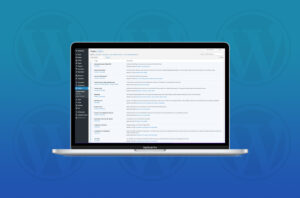Ever wondered why your business website isn’t converting? Do you feel like you have everything in place, yet your audience isn’t following through on your call to actions buttons, and your bounce rate is sky high? There could be a few crucial features that are missing in your website’s design, and adding and adjusting them might mean the difference between success and failure.
Use this article as a ‘checklist’ to see whether your web design is on par, and which features you can implement to boost conversions and encourage engagement.
So, ‘What’s Missing’?
1. Web Design That’s not Unique to Your Industry & Brand
The design of your site is the first impression a visitor will have about the business. This page should not only be reflective of your industry, products or services, but it should stand out from competition and reflect your company culture. The Following should be considered:
- Design should attract and imprint in the memory of your visitors to create “awareness”
- Content should create a narrative to ‘tell your story’ through the website.
- Keep the user’s focus by utilising subtle transitions and animations
Make sure that your web design is unique and recognizable. Distinct visual approach & style, typography and interactive design elements play a big role in this department. All this creates the first impression in your visitor’s head and is crucial for the next interaction with your website.
2. No Trending UX and UI Features
Even though your page visitor might not be able to pinpoint the exact reason why don’t find your website appealing, their subconscious will pick up that your page is sub-standard. Trending features within design can take a variety of forms, but for the last few years, these features are taking the front seat for UX and UI. Some of the sub-standard features in modern web design include:
- Material Design
- Minimal and Ghost Buttons
- Font Icons and Scalable Vector Graphics (SVG)
- Flat Design
- Hover and Transition effects
3. No Call to Action
One of the most biggest signs of bad UX is the lack of intuitive design. As a developer, your aim is to anticipate the behaviour of the page visitor, and more so, guide the behaviour to be favourable to the brand. Call to Action buttons are there to motivate visitors into action. These could be in the form of newsletter signups, registration, ‘buy now’, ‘learn more’ or ‘contact us’. Call to Action Buttons not only drives traffic to certain pages, but it influences engagement and improves conversion rates.
4. Low Performing, Slow Website
Many modern websites look really good, however being slow, results in high bounce rates, low page speed and low search engine rankings. This is often due to the site having to process too many scripts and requests, no optimized images and no caching. If your website is lightning quick it certainly helps boost those organic search rankings.
5. Your Web Page Is Not Working Well on Mobile
48% users say that if they arrive on a business site that isn’t working well on mobile, they take it as an indication of the business simply not caring. (Source: MarginMedia.com) Not having a responsive website is almost as good as not having a website at all. Businesses need to have responsive web design in order to give them online credibility. As Noetiforce explains; ‘Responsive Web Design is the DNA of modern web applications’.
At the end of the day, think of your website as a combination of art, design, and functionality. When these elements ‘work’ in harmony your page will be undeniable and ultimately guide the visitor to where you want them to be and help you achieve conversions/goals.




